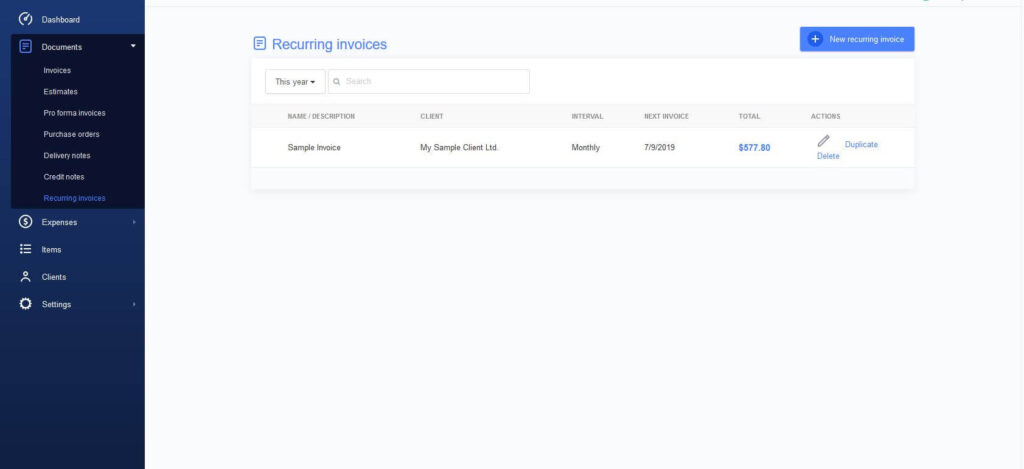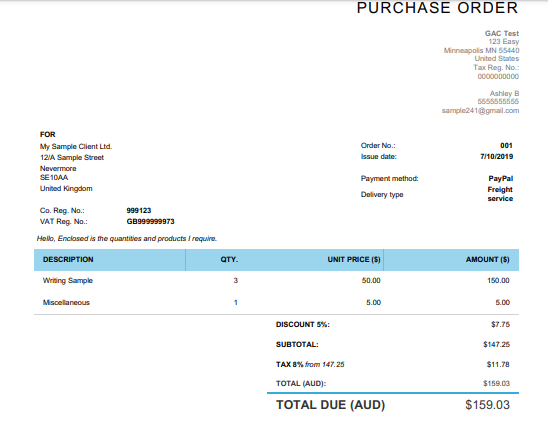If you routinely charge your customers on a set basis for ongoing goods and services, you’ve most likely heard of or set up a recurring invoice. If you haven’t and you’re wondering, “What is recurring invoice?” this post is here to help.
We’re going to go over all these points:
- Defining automated billing
- Why automated billing is important
- Why you’d use automated billing
- How Billdu can help you create fast and easy recurring payments
Defining Recurring Billing
Recurring invoices are very popular with modern business around the world because they give them the ability to automatically charge their customers an agreed-on amount for products or services. You typically submit your recurring invoice or apply your charges once a month on the same day each month.
However, you have to get permission from the customer to charge them on a monthly basis before you can set up and use your recurring invoices. You’ll continue to send your customer these charges each month until the end of their contract or until the customer withdraws their permission.
You see these types of invoices with cable companies, software businesses, utilities, cell phone bills, magazine subscriptions, and gym memberships.
They’re also popular with companies who set up recurring orders for inventory items. You bill them once a month when you drop off their inventory items, and you have a specific payment due date a week or two later.
Breaking Down a Recurring Invoice System
Recurring billing offers a layer of convenience for your customers. Instead of having to get in touch with them and have them provide their payment information each month, the cardholder can authorize you to hold their details and simply charge a set amount each month you deliver the services or products you agreed on.
For example, a customer could set up an order through your store for four bags of dog food on a three-month delivery schedule. Every three months, the order would go out, and you would get a payment through your automated billing system.
Limitations to Recurring Invoicing
This system does have a few limitations. For example, it can be slightly more in-depth when it comes time to correct any billing errors. Instead of getting a bill and checking it over, noticing a mistake, and resolving it before they pay, the recurring billing system will automatically bill the customer the incorrect price. You can issue a credit note, but it can take days to notice it.
The safest thing to do is to agree to set up recurring invoices for payments that are either exactly the same or right around the same amount each month. They also should stay on a schedule, and you should give them a quick once-over.
If a customer forgets about a payment and they overdraw their account, it can cause a headache on their end as well.
Benefits of Using Automated Billing
There are several distinct advantages to using recurring payments and automated billing through a service like Billdu. We’ve picked out seven different benefits and outlined them below for you. This can help you decide if you should implement this service or not.
1. Boost Your Cash Flow
- Recurring invoices help you get a steady stream of cash flow on a monthly basis. They also improve your cash flow from one month to the next.This helps you plan out any expenses or costs associated with your business that you have to pay. Additionally, they improve your cash flow projections.
For example, when you pay your monthly internet bill, the company knows that they have a certain amount of money coming from you and their other customers.
2. Speeds up Payments
- Humans are creatures of habit, and we are all used to paying our regular bills like utilities, cable, rent, and the phone bill. By sending our recurring invoices at the same time every month, you encourage your customers to get in the habit of paying at the same time every month. Additionally, almost any software allows you to link directly to your customer’s credit card to add a layer of convenience and prompt them to pay you.
3. Reduces Payment Chasing Times
- Recurring invoices can speed up your payments be ingraining good habits into all of your customers. In turn, you spend less time chasing after your payments. You won’t have to worry as much about sending late notices or warnings. Additionally, it’s good for your customers as well! They won’t have to try and remember to make their payment each month and get late fees if they miss it when they set up a bill payment scheduler.
4. Improves Relationships with Customers
- Instead of your customers seeing your business as another “ad hoc” vendor, they’re more likely to view you as part of their ongoing budget and extended team. This is how many businesses form anchor clients that they can depend on year-round for orders and a steady income stream.
5. Automates Payment Processes
- By using Billdu, you can easily create your recurring invoice using a template. It lets you set your payment schedule, make any changes as they happen, and link a payment method. It gives you the peace of mind that comes with knowing that your invoice goes out the same time each month to encourage prompt payments.
Additionally, you can use the platform to review any recurring invoices on a month-to-month basis before they go out. It’s an excellent option for people who have fluctuating invoice values like utility companies. Or, maybe you have a recurring invoice in place for $200 worth of products, but the customer wants to order $250 one month. You can adjust it accordingly.
6. Saves Time
- There’s no more spending hours pouring over dozens of paper invoices, preparing them, and dropping them in the mail. You can use automated billing to send out the invoices without any additional effort on your part. In turn, this frees up your time to concentrate on your day to day operations.
7. Eliminates Hidden Costs
- It may only take a minute or two to get an invoice in the mail, but you have to multiply this by hundreds or even thousands of customers. It really adds up, and it can add a lot of hidden costs to your budget. A bill payment scheduler is one way to cut out the majority of these costs and save your business money that you can allocate to other areas that need it.
How to Use Recurring Invoices
There are several ways you can use recurring invoices in your daily operations. For example, you have a customer who wants to order the same product or service once a month, and it costs $150. You’d bill them this amount each month and send them the product or service.
However, the customer lives in a tourist area, and they want to order $300 in products and services for three or four months out of the year. All you’d have to do is set up your recurring invoices for the eight or nine months out of the year and adjust it accordingly when they requested more.
All of your small changes show on the invoice, and you can even add notes, so the customer remembers why they pay more in certain months compared to other months.
Why Choose Billdu for Your Bill Payment Scheduler
Billdu offers several advantages for our customers to enjoy when they use our software to set up and send recurring payments and invoices. Each of our customers, both large and small, can enjoy the following:
- User-Friendly Design – Unlike some types of invoicing software, Billdu strives to make our software very user-friendly and easy to navigate. We give you a minimalist design that isn’t cluttered by unnecessary distractions. Also, you don’t have to click multiple times to get to your recurring invoices.
- Flexible – It’s extremely to set up, send, modify, and delete recurring invoices as you need. This flexibility makes it easy and fast to monitor your cash flow and your accounts. If you need to adjust the price or items, it’s just a few simple clicks and you’re ready to send out your new invoice.
- Centralized Location – Your dashboard gives you one centralized location for all of the documents you create. They cascade down your screen, and you can tell at a glance whether or not the client paid you or if there was a problem in the billing process.
- Mobile App – Billdu’s mobile app makes it easy to check your accounts on the go. All you do is download it and open it on your phone. You can instantly access all of the important documents you set up for your business’s finances.
Creating Recurring Invoices with Billdu
Billdu is a very user-friendly software system that makes it easy and quick to create recurring billing and send our recurring invoices using templates.
We’re going to show you a guide that goes step by step that gives you everything you need to create and send out your own recurring invoices. We can help you make a single recurring invoice, or you can set up dozens all from one central location.
Step One – Create Your Account
The first thing that you want to do is visit Billdu.com and click “create account” under the login button. When you do this, it opens a new tab where it’ll prompt you to fill in your Business Name, a valid email, and a password. Fill it all in and hit “create account.” Billdu will redirect you to your new dashboard.
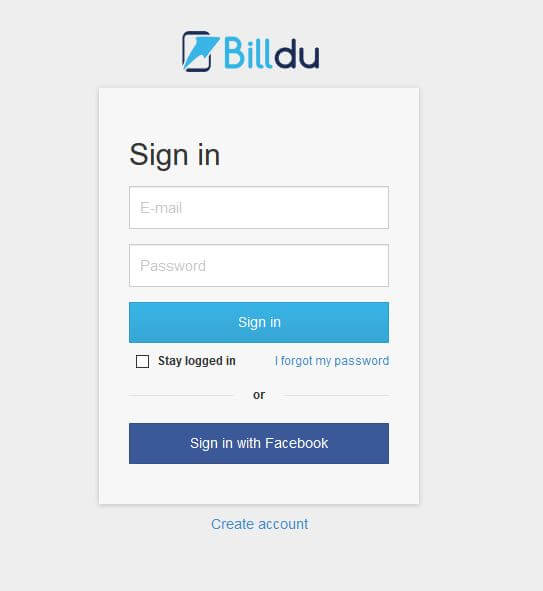
Step Two – Get Comfortable with Billdu’s Dashboard
Billdu has a very sleek and user-friendly dashboard for our customers to use. It’s encouraged to explore the platform in order to get used to where everything is. This shouldn’t take too long to do, and you’ll be able to complete a host of tasks all in one centralized location.
On the left side of the dashboard, you’ll notice icons labelled “Documents,” “Expenses,” “Items,” “Clients,” and “Settings.” You want to click on Documents to start.
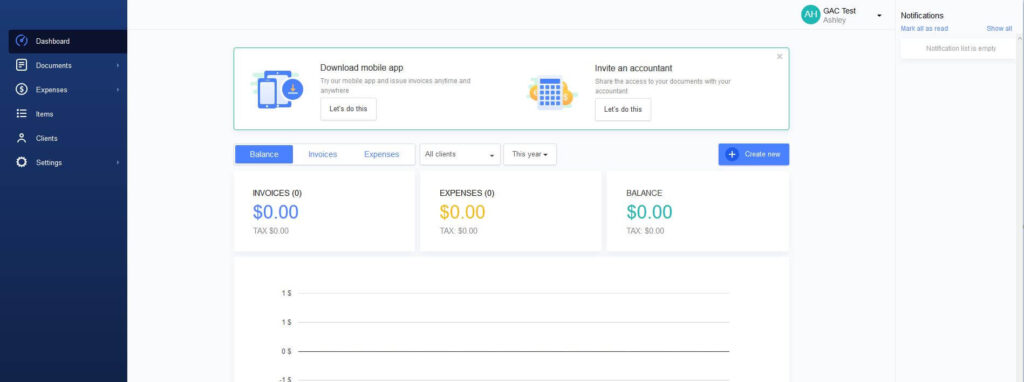
Step Three – Open the Recurring Invoice Template
When you click on “Documents,” a small menu will appear under it. You want to locate the Recurring Invoice document. It’s the seventh and last document in the list. Click on it. Doing this will open the recurring invoice template dashboard, and you can click on the blue + New Recurring Invoice button on the right side.

Step Four – Filling in Your Recurring Invoice
You’ll fill in all of your blank spaces in your template. You can input a name or description, issue date, recurrence, send an email (yes or no), cycles, client, and a due date.
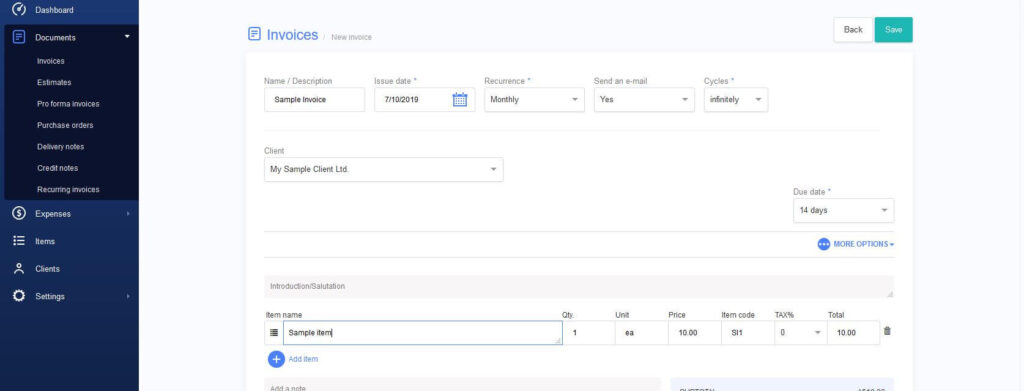 If you click the Other Options button, it’ll prompt you to fill in the payment method, currency, language, and an optional discount.
If you click the Other Options button, it’ll prompt you to fill in the payment method, currency, language, and an optional discount.
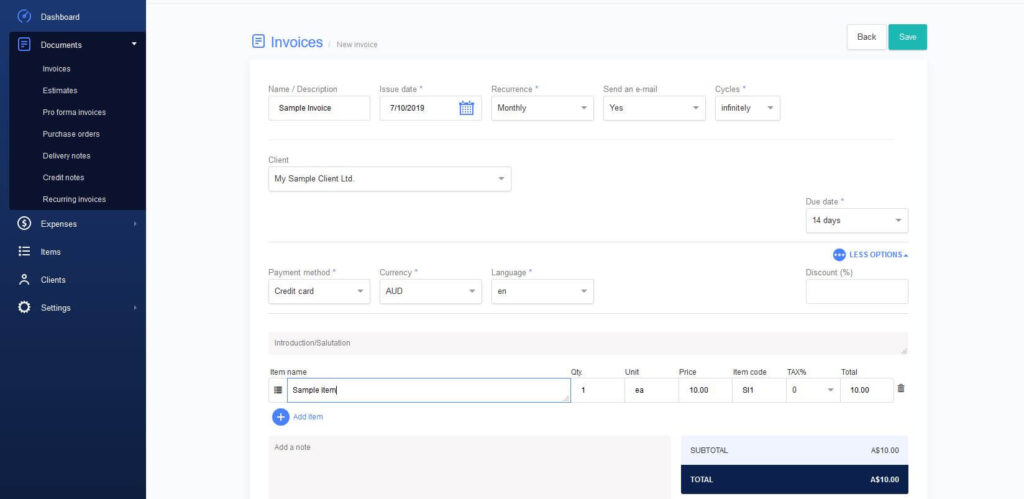 You can write a short introduction or greeting before you add in your items. You’ll fill in the item name, quantity, unit, price, item code, and tax before the software populates the total for you. When you finish, click “save.”
You can write a short introduction or greeting before you add in your items. You’ll fill in the item name, quantity, unit, price, item code, and tax before the software populates the total for you. When you finish, click “save.”
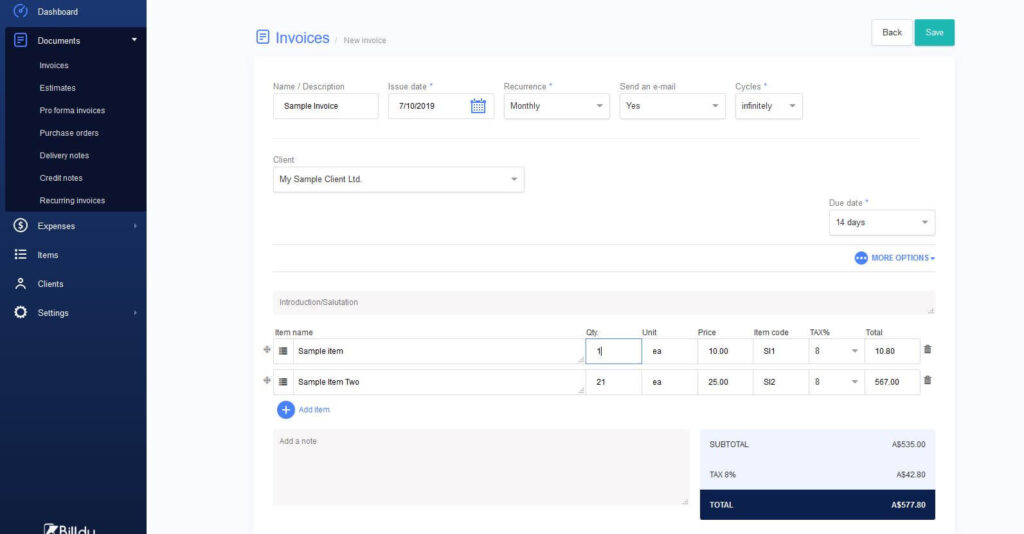
Step Five – Edit and Monitor Your Recurring Payments as Necessary
Hitting save will save the recurring payment and send you back out to your dashboard. Each payment you set up will cascade down the list. It shows a short description, the client, interval, when the next invoice goes out, and the total. You also get the ability to edit, duplicate, and delete it as you see fit.
